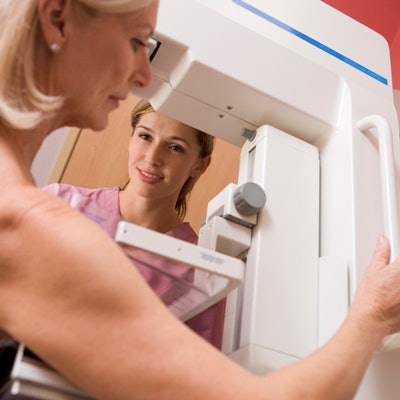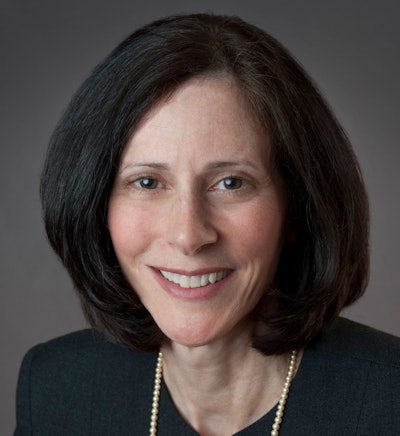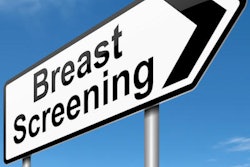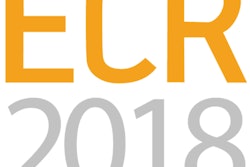
Women at high risk for breast cancer should start annual mammography screening before the age of 40, and they may benefit from supplemental screening modalities such as breast MRI, according to guidelines from the American College of Radiology (ACR) published online January 19 in the Journal of the American College of Radiology.
In fact, all women should be evaluated for breast cancer risk no later than the age of 30, so that those at higher risk can be identified and therefore benefit from supplemental screening if necessary, wrote a team led by Dr. Debra Monticciolo of Texas A&M University and Scott & White Medical Center in Temple, TX.
"Women with additional risk factors placing them at higher-than-average risk for developing breast cancer need further consideration for earlier and/or more-intensive screening," the group wrote. "These women typically have, at [younger than] 40 years, risk equivalent to or higher than that of an average-risk woman at age 40."
Handling high risk
 Dr. Debra Monticciolo from Texas A&M University.
Dr. Debra Monticciolo from Texas A&M University.
Factors that can contribute to a woman's higher risk of breast cancer include having a personal or family history of the disease, having dense breast tissue, and having undergone chest radiation therapy at a young age. Black women and those of Ashkenazi Jewish descent are also at higher risk.
Monticciolo and colleagues from the ACR's Commission on Breast Imaging reviewed clinical literature regarding the screening of higher-risk women, and in their analysis they included consideration of the ACR's Appropriateness Criteria. The group produced recommendations for women in the higher-risk population using a variety of modalities: MRI, ultrasound, molecular breast imaging (MBI), digital breast tomosynthesis (DBT), and digital mammography.
For women with a high risk of developing breast cancer, the ACR recommends the following:
- Women with genetics-based increased risk or with a calculated lifetime risk of 20% or more should undergo annual digital mammography with or without DBT beginning at age 30.
- Women with a history of chest radiation therapy before the age of 30 should undergo annual digital mammography with or without DBT starting at age 25 or eight years after radiation therapy, whichever is later.
- Women with genetics-based increased risk, a history of chest radiation, or a calculated lifetime risk of 20% or more should also undergo annual breast MRI beginning at age 25 to 30.
- Women with a personal history of breast cancer and dense breast tissue or those diagnosed before the age of 50 should undergo annual breast MRI surveillance.
- Breast MRI should be considered for women with atypical ductal hyperplasia, atypical lobular hyperplasia, or lobular carcinoma in situ -- especially if other risk factors are present.
- All women, but especially black women and those of Ashkenazi Jewish descent, should be evaluated for breast cancer risk no later than the age of 30.
What about ultrasound?
As for ultrasound, the ACR recommends that it be considered for women at elevated risk who qualify for breast MRI but cannot undergo it, Monticciolo and colleagues wrote. For those at increased risk due to breast tissue density, ultrasound should be considered as an adjunct to screening mammography -- after weighing the pros and cons of the modality.
"Multiple studies confirm the incremental cancer detection capabilities of whole-breast ultrasound in women at elevated risk. ... However, this supplemental detection of clinically favorable cancers is accompanied by an increase in false-positive findings and lower positive predictive value," they noted.
The researchers also addressed the usefulness of MBI in women at high risk for breast cancer. However, although the technology shows excellent sensitivity and good specificity -- and its performance is not hindered by breast density -- dose concerns remain, they wrote.
"Further advances in detector technology to allow lower dosing, more widespread penetration of MBI-guided biopsy capabilities, and additional large prospective trials ... will be needed before MBI can be embraced as a screening tool, even in women at elevated risk," the group concluded.
Monticciolo and colleagues hope that radiologists, other physicians, and women themselves will see the recommendations as a resource, she told AuntMinnie.com.
"We've looked at a lot of data and tried to distill it in an understandable way," she said. "If we want to help those women at higher risk of developing breast cancer, we need to be proactive in screening them, and these recommendations are a solid step in that direction."


















